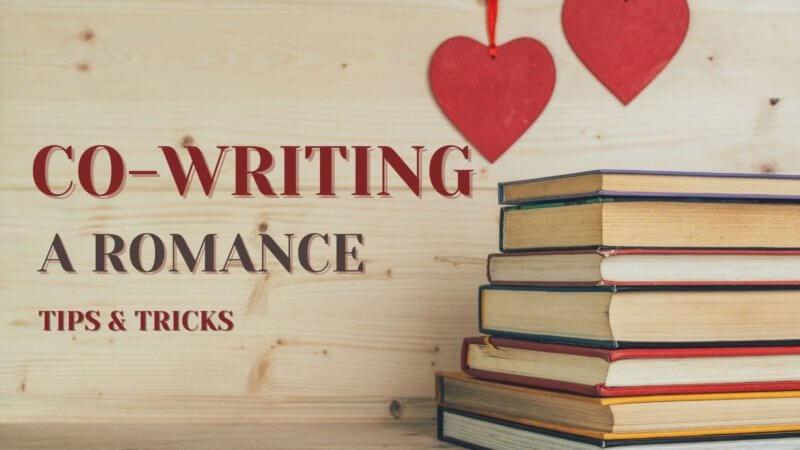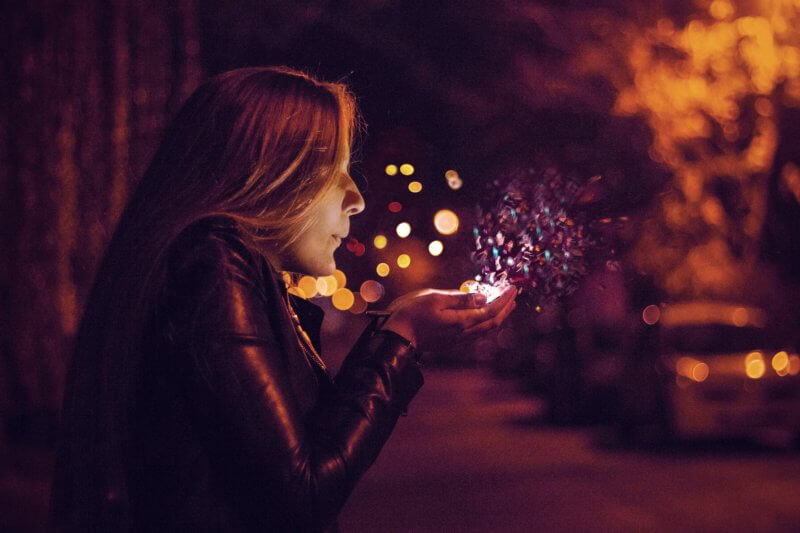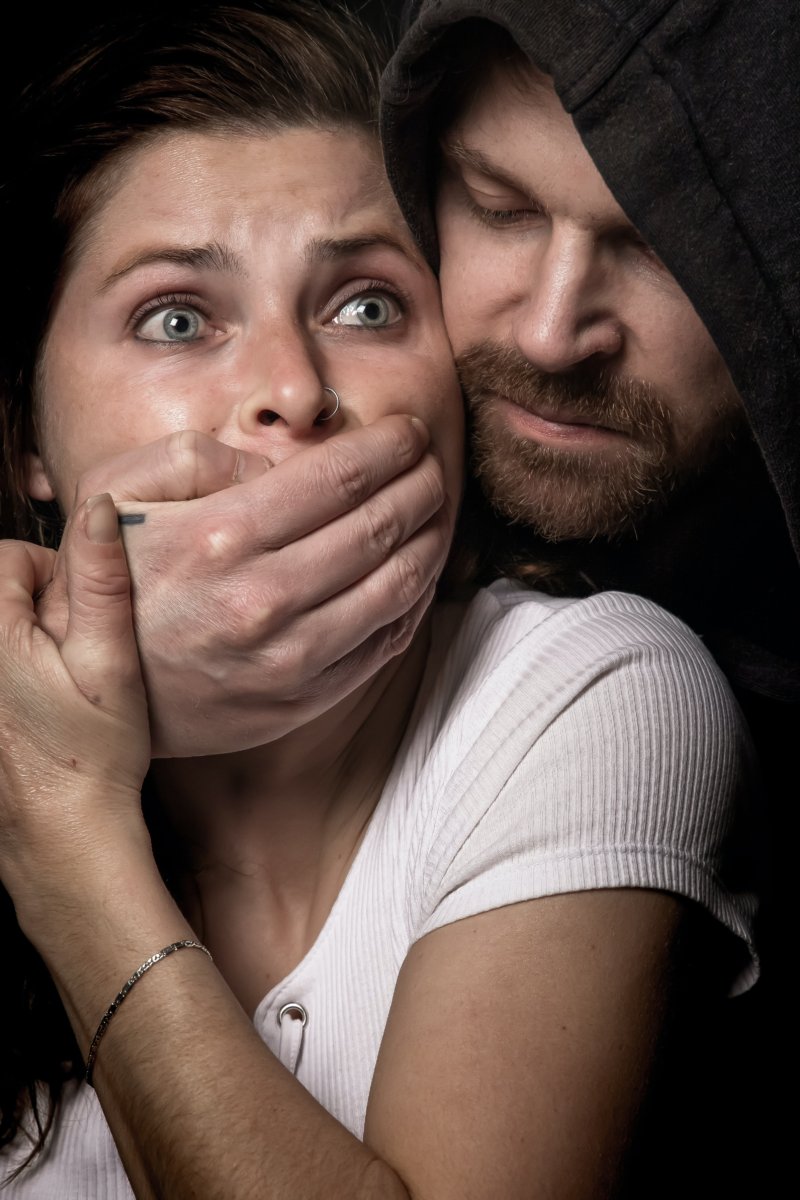Hello, friend! Welcome to another post in The Creator’s Roulette. Today I have author Kyro Dean with you. You might remember from her from the cover reveal and book excerpt-sum-interview for her book, The Covenant of Shihala, co-written with Laya V. Smith. I wanted to learn what co-writing a series looks like, particularly a romance series, and I loved what Kyro put together! I hope you enjoy this post as much as I did. 🙂 Let’s meet her:

Kyro Dean’s works live in the shadows of ghost-publishing and have received high-praise and glowing reviews. Her steampunk romance, The Baron’s Ghost, available on Kindle Vella. She also runs the Vanilla Grass Writing Resource blog to help writers improve their craft.
Writing Romance with a Co-Author: Making the Magic Happen
A guest post by Kyro Dean

Wondering how to write a romance series with a co-writer? Or maybe you’re just wondering how to write a novel with a friend? This post will go over some classic tips and tricks for writing a romance novel with a co-writer.
Now, as with any story, where to begin?
As the co-writer of over 16 romantic fantasy books in The Fires of Qaf series with my co-author, Laya V. Smith, I get A LOT of questions about how co-writing works. More specifically, how do we manage to write romance together without a) killing each other and b) making things weird.
Well, tune in, new friends! I’m about to take you behind the velvety curtain of romance writing and give you some tips and tricks for navigating co-writing when love is on the line.
But before we kick things off, let’s touch on something every good romance novel needs: tropes of the genre.
Do co-written romance novels need tropes?
Yes. Yes. Yes. Yes.
But deciding on what kind of love to grow between characters can be tricky when two people are involved.
One of the hardest things for most co-author duos is allowing someone else creative control over your darling. This can be especially true when the heart of your hero or heroine is on the line!
As creative parents, we want our main characters to have the Happily Ever After (HEA) ending they deserve. After all, isn’t that the ultimate romance trope?
Unfortunately, deciding which trope to pick for a romance novel can be tough! And adding another person to the decision-making process on top of that can seem daunting.
Nevertheless, it’s super important! And while some of the tips below will help you decide how to choose which tropes and what style you want for your co-written romance novel, make sure you hit the all-important trope above.
An HEA is an absolute must for romance novels!
With that in mind, here’s co-writing tip numero uno on writing romance tropes with a co-author:
1. Co-writers should understand each other’s writing styles.

For instance, if one of you is a pantser (makes up the story as you go) and the other is a plotter, then choosing a trope can seem more like scaling a mountain. A monstrous, mammoth, masochistic mountain.
So how do Laya and I manage it?
As fortune would have it, we are both pantsers! But we only “pants” the story, never the characters. When writing character-driven romance (the best kind!), having fully-fleshed-out characters that are compatible is essential for a successful romance.
With that said, we usually can tell what type of romantic tropes will be at play after our character sheets are done.
As an example, in our first romance, The Covenant of Shihala, our hero is dutiful, devoted, and longing for love. Our heroine, meanwhile, is flighty, yes, but also devoted and longing for love.
Based on their sheets, we knew these two would have an instant (“Love at first sight”) connection and be fiercely loyal to each other.
On the other hand, in our third novel, The Seal of Solomon, our hero and heroine are nothing alike, aside from a burning passion from their youths they both rue.
Their shared past and recent separation already invoked the “re-united lovers” trope, but their distinctly different personalities and rough separation also rings true with the “haters to lovers” trope.
Which leads to co-writing tip #2:
2. Co-writers should always let characters drive the story.

And that holds true whether you’re plotting or “pantsing”.
So, aside from amazing, character-led tropes, what else do co-writers have to deal with when writing a romance?
Great Banter
That’s right, friends!
Nothing adds more zing to a romance than witty, delightful banter. So how do you write dialogue with a co-writer?
Why, by bantering with them, obviously.
But that’s easier said than done! And, most importantly, brings us to co-writing tip #3:
3. Co-writers should like each other.
At least a little…
Now, don’t laugh. I say this because not everyone here is wondering how to write a book with a friend. I see advertisements all the time for people looking for co-writers for X, Y, or Z novels.
Shooting in the dark has a chance for success, but if you want a juicy romance filled with Jane Austen-level wit, knowing (and liking!) your writing partner is essential.
Picture this for a moment: You walk into a coffee shop, spy a cutie on the couch typing away on their laptop, and decide to make a move. You walk over. Take a deep breath. Lift your eyes to theirs…
And they cut you off with an abrupt, hand-wavy gesture to move out of the way of their view of the room.
Um.
Rude.
Now, imagine having to ignite some playful banter and turn that thing into a romance.
It’s not impossible! You’re looking at a potential, hate-to-love trope, after all. But who has time for that when writing a novel with a co-writer in real life? There are already enough obstacles to overcome.
So leave the angsty romance trope for the book and find someone you enjoy being around.
Otherwise, your characters’ dialogue will suffer and your readers won’t feel the magic!

No bueno.
That said, being chummy with your co-writer comes with its own hurdles. For instance, there have been times where Laya and I (via our characters on the page) will really get into ribbing each other, when, perhaps, the plot should be moving along, instead.
In other words, if your characters’ banter isn’t happening, maybe it’s because you and your co-writer don’t banter either. Look for a co-writer with a wit and humor style you get and can play along with, and vice-versa!
Which leads to an interesting question: how does co-writing romantic chemistry work?
Building Chemistry

With two inherently different substances and a little bit of heat.
But honestly this one is more difficult to achieve than readers often realize. Even for solitary writers, getting the “spark” between two characters can be tough!
Which brings me to the book sitting in the “fridge.” Or the place where our characters go to chill out! We only have one there now, but it was a disaster of a romance for the ages!
We were going for the “reunited lovers” trope, but our two main characters just weren’t compatible. They loved each other desperately as teenagers and now loved… the idea of each other. On their character sheets, it looked like they’d squeak by on this past love, but when it got down to the chemistry on the page, there was none. It simply didn’t exist.
And so we put the book to rest, at least for now.
And it hurt!
When you write character-driven stories, the author can’t help but internalize every struggle on the page. I do. And watching my bold hero fail miserably in love hit close to home.
But even with best friend co-writers who could identify each other by the clack of their keyboards, sometimes the chemistry just isn’t there.
Which leads to co-writing tip #4:
4. Co-writers should never force the romance.

Not only will this help prevent the ultimate taboo (rapey main characters), but it will save time and headaches later. If you’re not happy with the romance developing, it means your characters aren’t. This, in turn, means your readers won’t be enthralled with your story, either.
So, what do you do if the romance between you and your co-writer’s characters just isn’t happening?
- Try identifying the moment when the chemistry fell apart. Did it ever even start? And if not, what happened?
Example: We had two love-struck characters who were humming along, only to trip and fall apart two-thirds of the way through. What happened? A scene with poorly-written tone. We talked to each other, clarified the tone of the scene, and voila! The romance was humming again.
- Try adjusting the circumstances. Sometimes, people just need a different meet-cute or dire straits to pull together.
- Consider the fridge. And I don’t say that lightly! But if you have a romance that just isn’t working, and you’ve tried the two steps above, consider stopping. You wouldn’t encourage a friend in real life to stay in a romance that’s stale, awkward, or making her miserable, would you? Perhaps after some time you can pull it back out, but in the meantime, try going for a different romance story that is working.
Is there a risk for accidental real-life romance?

But what if cold chemistry isn’t the problem. What if you’re co-writing a brilliant romance with spicy chemistry and swooning characters… do things between you and your co-author get weird?
Or, as Laya and I have been asked more bluntly: do you ever get turned on by each other?
While we joke a lot about how we’ve both wooed (and won!) each other sixteen times and counting, writing romance with someone else has its drawbacks.
Overall, we’re perfectly fine. We focus so intently on our characters and on truly becoming them when we write, that when we’re away from the page and staring at each other in person, residual romance isn’t there.
But that doesn’t mean the feelings don’t bleed over! Laya and I have both spent days weeping when our characters are sad, or snipping at each other when they’re fighting.
That said, we do have one unwritten rule (at least until now) to reduce the awkwardness. Namely, NO facetiming when we’re writing a steamy scene.
Could I help any man Cyrano de Bergerac my co-writer? Absolutely. As she could me. But we wouldn’t! And we have formed an intense bond – something inevitable when you write this closely for so long with one person. But that’s where it ends.
So if you’re worried about a bubbling-up of unwanted feelings for your co-writer if you write romance, rest assured you’ll *probably* be fine.
Co-Writing Conclusion
And that’s it. Just a few tips and tricks to help co-writers get their romance on. To sum up, we learned:
- Co-writers should understand each other’s writing styles.
- Co-writers should always let characters drive the story.
- Co-writers should like each other.
- Co-writers should never force the romance.
Make sure to leave a comment with any co-writing tips you have for writing romances! And be sure to check out our Fires of Qaf series on Amazon or on our website at Eight Moons Publishing!
Have you considered co-writing a book? Have you done it? Tell us your experiences in the comments!
Thank you for hanging out with us today. Connect with Kyro on Twitter, Instagram and Vanilla Grass Writing Resource blog. Follow Eight Moons Publishing for updates on books!
Another article that might be of interest is Betsy Miller’s Collaborating and Co-authoring.
Cover image: Photo by Almos Bechtold on Unsplash

Be First to Comment